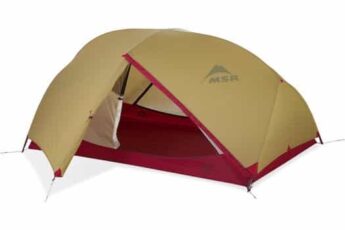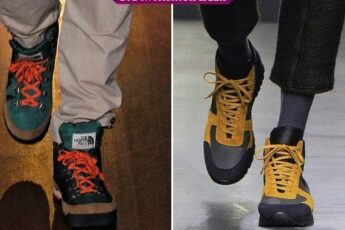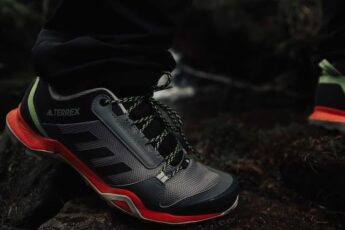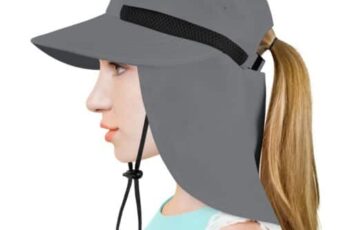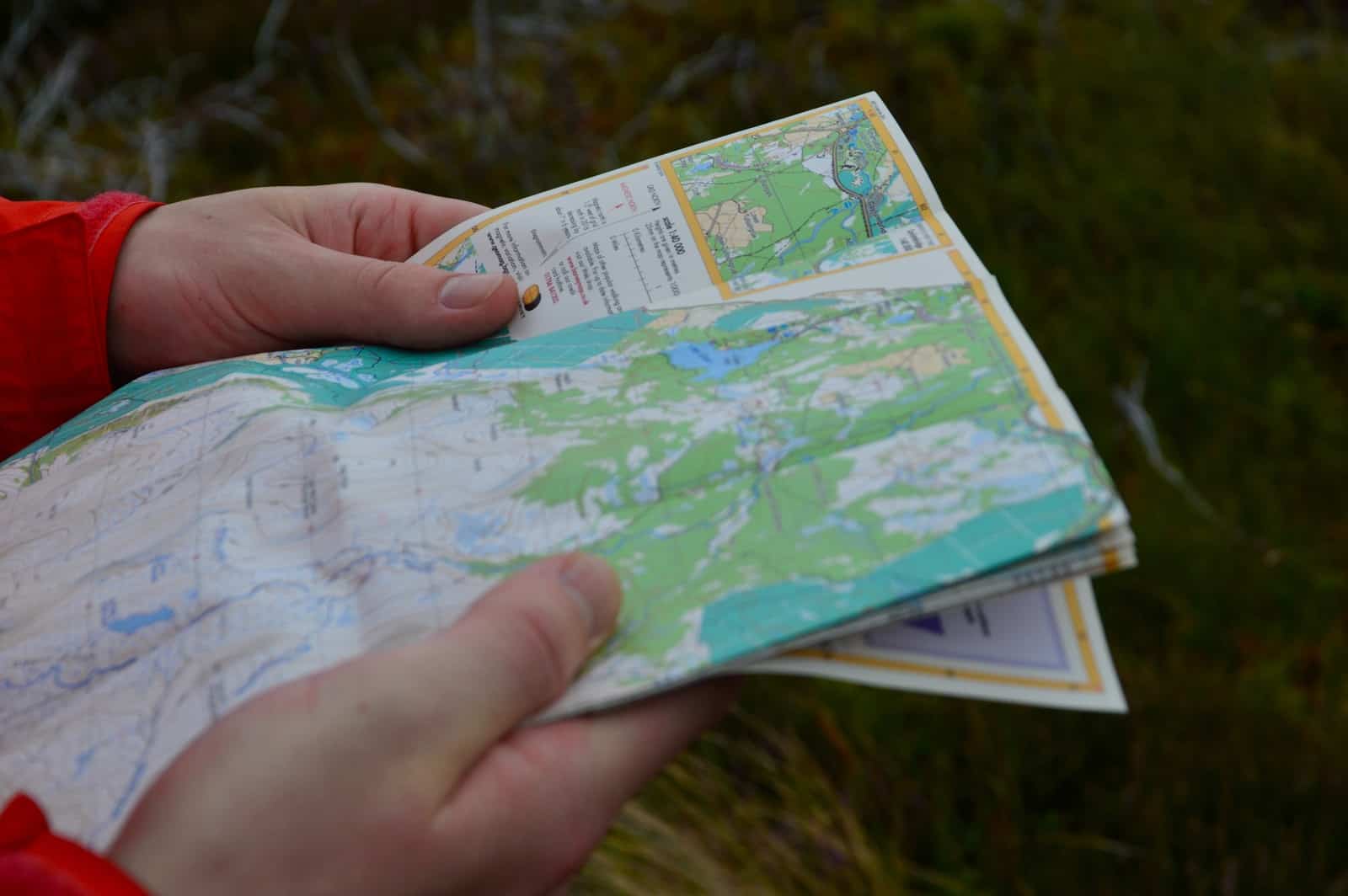Ultralight Trekking Pole Tents: Your Key to Backpacking Freedom
This article aims to provide an in-depth guide to ultralight trekking pole tents. We will explore the benefits of using these tents, factors to consider when choosing one, how to set them up, and tips for maintenance and repair.
We will also discuss considerations for different seasons and environments and safety considerations when using an ultralight trekking pole tent.
What is an Ultralight Trekking Pole Tent?
An ultralight trekking pole tent is a type of tent that is designed to be lightweight and compact. It is typically made of lightweight materials like Silnylon or Dyneema and relies on trekking poles for support.
This means you’ll need to bring your own trekking poles or purchase them separately if you don’t already own a pair. Ultralight trekking pole tents are designed to be easy to set up and take down, and they can be packed down to a tiny size, making them ideal for backpackers who need to save space and reduce weight.
Importance of choosing the right tent for backpacking
Choosing the right tent is essential for a successful backpacking trip. A good tent will provide protection from the elements, keep you comfortable, and not weigh you down. Ultralight trekking pole tents are an excellent option for backpackers who want to minimize the weight and size of their gear without sacrificing comfort or safety.
Benefits of Ultralight Trekking Pole Tents
List of ultralight trekking pole tents benefits:
- Lightweight and compact
- Easy to set up and take down
- Versatile and customizable
- Good ventilation and weather protection
- Cost-effective
Lightweight and compact
One of the main benefits of ultralight trekking pole tents is their weight and compact size. In addition, since they are designed to be set up with trekking poles, they don’t require traditional tent poles, which can add weight and take up space in your backpack.
Easy to set up and take down
Ultralight trekking pole tents are designed to be easy to set up and take down. They usually have fewer parts than traditional tents, and you don’t need to worry about finding the right length or size of tent poles.
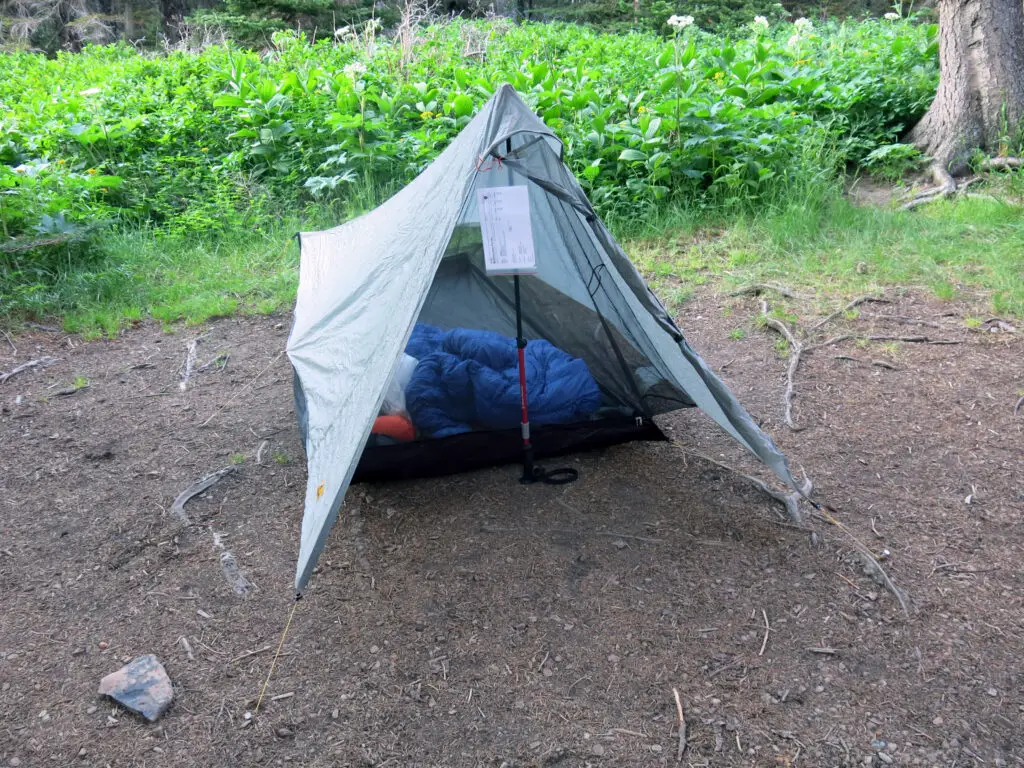
Versatile and customizable
Many ultralight trekking pole tents are designed to be versatile and customizable. You can adjust the pitch and height of the tent to suit your needs and the terrain. This can make them more comfortable and better suited for different environments.
Good ventilation and weather protection
Despite their lightweight and compact design, ultralight trekking pole tents can provide excellent ventilation and weather protection. This is because they are typically made from high-quality materials that withstand wind, rain, and other elements.
Cost-effective
Finally, ultralight trekking pole tents are often cost-effective compared to traditional tents. Since they don’t require conventional tent poles, they can be more affordable. They also tend to last longer, which means you won’t need to replace them as often.
Factors to Consider When Choosing a Trekking Pole Tent
Consider several important factors before purchasing if you’re in the market for an ultralight trekking pole tent. Here are the key factors to keep in mind:
Capacity
The first factor to consider when choosing an ultralight trekking pole tent is capacity. Ultralight tents come in various sizes, so choosing one that can accommodate the number of people using them is essential. Also, remember that ultralight tents are typically designed for solo hikers or couples, so you may need to purchase multiple tents if traveling in a larger group.
Weight
The weight of your ultralight tent is another crucial factor to consider. The whole point of an ultralight tent is to keep your pack weight down, so you’ll want to choose a tent that is as light as possible without sacrificing durability or livability. Look for tents that weigh less than two pounds, but remember that the more lightweight the tent, the more expensive it will be.
Durability
Durability is another important consideration when choosing an ultralight trekking pole tent. Ultralight tents are typically made with lightweight materials, which can be more susceptible to tears, punctures, and other damage. Look for tents made with high-quality materials like ripstop nylon or Dyneema, which are both lightweight and durable.
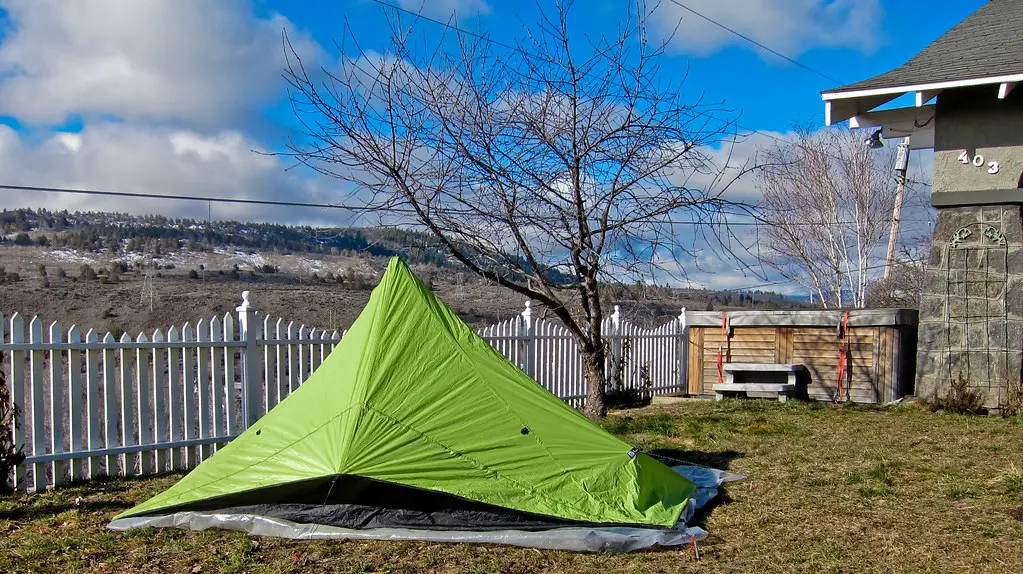
Seasonality
The seasonality of your trip will also play a role in the type of ultralight tent you choose. A three-season tent will likely be sufficient if you plan to hike in the summer or in a mild climate. However, if you plan to hike in colder temperatures or snowy conditions, you’ll want to choose a four-season tent that can handle the elements.
Livability
Livability refers to the overall comfort and functionality of your ultralight tent. Look for tents that have enough headroom for you to sit up comfortably, as well as enough space for you to store your gear. Some ultralight tents have vestibules for additional storage space, while others have mesh panels for ventilation and to reduce condensation.
Price
Finally, price is important when choosing an ultralight trekking pole tent. While it’s true that you get what you pay for, plenty of high-quality ultralight tents are available at reasonable prices. Look for tents that meet your needs in capacity, weight, durability, seasonality, and livability, and then choose the one that fits your budget.
Design
The design of the tent can also impact its performance and comfort. Consider factors such as the tent’s shape, height, and pitch. You may also want additional features such as vestibules, gear lofts, or interior pockets.
Overall, choosing an ultralight trekking pole tent requires careful consideration of several factors. By keeping these key factors in mind, you’ll be able to find a tent that meets your needs and helps you enjoy your outdoor adventures to the fullest.
Types of Ultralight Trekking Pole Tents
There are three main types of ultralight trekking pole tents: single, double, and hybrid. Each class has advantages and disadvantages, so it’s essential to consider your specific needs before purchasing.
Single-Wall Tents
Single-wall tents are lightweight and easy to set up, making them popular among ultralight hikers. These tents are made with a single layer of fabric that provides shelter and protection from the elements. In addition, because they don’t have a separate rainfly, single-wall tents are typically more compact and lightweight than double-wall tents.
Benefits of Single-Wall Tents:
- Lightweight and easy to pack
- Fast and easy to set up
- More compact than double-wall tents
- Require less space to pitch
Examples of Single-Wall Tents:
- Zpacks Duplex
- Tarptent ProTrail
- NEMO Hornet Elite
Double-Wall Tents
Double-wall tents are heavier than single ones but offer more protection from the elements. These tents have an inner tent that provides shelter and a separate rainfly that offers additional protection from rain and wind. In addition, double-wall tents are typically more spacious than single ones, making them a good choice for taller hikers or those needing more storage space.
Benefits of Double-Wall Tents:
- Offer more protection from the elements
- Provide better ventilation and reduce condensation
- More spacious than single-wall tents
- Good for taller hikers
Examples of Double-Wall Tents:
- Big Agnes Copper Spur HV UL2
- NEMO Dagger
- MSR Hubba Hubba NX
Hybrid Tents
Hybrid tents combine the best features of single-wall and double-wall tents. These tents have a single layer of wall fabric and a separate rainfly for the roof. Hybrid tents are typically more lightweight than double-wall tents and provide better protection from the elements than single-wall tents. They’re a good choice for hikers who want the best of both worlds.
Benefits of Hybrid Tents:
- Lightweight and easy to pack
- Offer good protection from the elements
- Provide better ventilation and reduce condensation
- More spacious than single-wall tents
Examples of Hybrid Tents:
- Zpacks Duplex Flex
- Tarptent Rainbow
- Big Agnes Fly Creek HV UL2
Overall, the type of ultralight trekking pole tent you choose will depend on your specific needs and preferences. By considering the benefits and drawbacks of each type, you’ll be able to find a tent that meets your needs and helps you enjoy your outdoor adventures to the fullest.
How to Set Up an Ultralight Trekking Pole Tent
Ultralight trekking pole tents are lightweight and easy to carry, making them ideal for backpacking and camping trips. One of the benefits of using a trekking pole tent is that it can be set up quickly and easily.
Selecting a campsite
Choosing a good campsite is essential for setting up an ultralight trekking pole tent. Look for a flat, level area free from rocks and debris. Avoid camping in areas that are prone to flooding or have loose soil, as this can make it challenging to secure your tent.
Attaching the tent to trekking poles
You will need two trekking poles to set up an ultralight trekking pole tent. The first step is to adjust the poles’ height to match the tent’s height. Once the poles are adjusted, you can attach the tent to the poles by sliding the pole tips into the grommets or loops at each corner of the tent.
Staking out guy lines and adjusting the tension
The next step is to stake out the guy lines to stabilize and adjust the tent’s tension. Guy lines are cords that extend from the tent and are anchored to the ground using stakes or rocks. By changing the tension of the guy lines, you can ensure that your tent is stable and secure.
Adjusting ventilation
Proper ventilation is essential for a comfortable and safe camping experience. Most ultralight trekking pole tents have mesh panels that allow for ventilation. Adjust these panels as needed to ensure proper airflow and minimize condensation.
Alternative ways to set up the tent without trekking poles
If you don’t have trekking poles or prefer not to use them, you can still set up an ultralight trekking pole tent using alternative methods. One option is to use tent poles specifically designed for your tent. Another option is to use trees or other natural anchors to support your tent.
Important tips to remember:
- Look for a flat, level campsite free from debris and obstacles.
- Use trekking poles to support your tent and adjust the poles’ height to match the tent’s height.
- Stake out the guy lines to stabilize and adjust the tent’s tension.
- Adjust the ventilation to ensure proper airflow and minimize condensation.
- Finally, consider alternative methods for setting up your tent if you don’t have trekking poles or prefer not to use them.
Tips for Maintaining and Repairing an Ultralight Trekking Pole Tent
Ultralight trekking pole tents are an excellent option for backpackers and hikers who want to minimize weight and pack size while still having a reliable shelter. However, like any outdoor gear, they require regular maintenance and occasional repairs to maintain good working conditions.
Cleaning and storing the tent
- After each trip, set up the tent and air it out to prevent mold and mildew growth.
- If the tent is dirty, use a soft brush or sponge to clean it with mild soap and water. Rinse thoroughly and let it dry completely before storing.
- Store the tent in a cool, dry place away from direct sunlight to prevent UV damage. Do not store it in a compressed state for extended periods.
Patching holes and tears
- If you notice a hole or tear in the tent fabric, patch it as soon as possible to prevent it from worsening.
- Clean the area around the tear with rubbing alcohol and let it dry completely.
- Apply a patch over the tear using a tent repair kit or duct tape. Make sure the patch is larger than the tear to ensure proper coverage.
Replacing damaged parts
- If a tent pole breaks, try to repair it with a splint or a temporary fix using duct tape or a cord.
- If the damage is extensive or the pole cannot be repaired, replace it with a new one.
- For other damaged parts, contact the manufacturer for replacement options.
Avoiding common mistakes
- Do not use harsh chemicals or bleach to clean the tent, as they can damage the fabric.
- Do not store the tent when wet, as it can lead to mold and mildew growth.
- Do not set the tent on rough or abrasive surfaces, as they can damage the floor.
By following these tips for maintaining and repairing your ultralight trekking pole tent, you can ensure that it lasts for many future trips. Prevention is vital, so take care of your tent after each trip and address any issues as soon as you notice them.
Considerations for Different Seasons and Environments
Regarding ultralight trekking pole tents, it’s essential to consider the different seasons and environments you’ll encounter. The right tent will provide adequate protection from the elements, ensuring a comfortable and safe trip. Below are some considerations for different seasons and environments during your backpacking trips.
Winter Camping
Winter camping requires a specialized ultralight trekking pole tent to withstand harsh winter conditions. Look for a tent with a sturdy frame that can withstand heavy snow loads and strong winds.
A double-wall tent is recommended as it provides better insulation and condensation management. You’ll also need to ensure that your tent has sufficient ventilation to reduce condensation buildup.
Hot Weather Camping
When camping in hot weather, it’s essential to have a tent that provides sufficient ventilation to keep you cool. Look for a single-wall tent that has large mesh panels to promote airflow.
A tent with a rainfly will also provide much-needed shade during the day. Additionally, choose a location with plenty of shade and a breeze to keep you cool.
Wet and Rainy Weather
Camping For wet and rainy weather camping, a double-wall ultralight trekking pole tent is the best choice. A rainfly provides an extra layer of protection against rain and moisture.
Ensure that the tent is made of waterproof and durable materials that can withstand prolonged exposure to moisture. Additionally, look for a tent with a bathtub-style floor that prevents water from seeping through the bottom.
High-Altitude Camping
High-altitude camping requires a specialized ultralight trekking pole tent that can withstand strong winds and extreme temperatures. Look for a tent with a sturdy frame that can withstand heavy snow loads.
A double-wall tent is recommended as it provides better insulation and condensation management. You’ll also need to ensure that your tent has sufficient ventilation to reduce condensation buildup.
Choosing the right ultralight trekking pole tent is essential for a successful backpacking trip. Consider the different seasons and environments you may encounter and choose a tent that meets your specific needs.
By taking the time to research and invest in the right tent, you’ll be able to enjoy your trip with confidence and comfort.
Safety Considerations When Using Ultralight Trekking Pole Tents
Ultralight trekking pole tents are popular among hikers and backpackers who value minimalism, weight savings, and versatility. However, as with any outdoor activity, safety should always be a top priority.
Proper Use of Guy Lines and Stakes
One of the key safety considerations when using an ultralight trekking pole tent is to ensure it is correctly secured to the ground. This involves using the guy lines and stakes with the tent to keep it stable in windy or stormy conditions.
Here are some tips for using guy lines and stakes:
- Be sure to stake out all corners and guylines for maximum stability
- Use sturdy stakes appropriate for the ground type you will be camping on (i.e., different stakes for rocky soil, sandy soil, etc.)
- Use guylines to help stabilize the tent, especially in windy or stormy conditions.
- Ensure that all guylines are taut but not overly tight, as this can damage the tent fabric.
Avoiding Tent Placement in Dangerous Areas
When setting up your tent, it’s essential to consider the surrounding environment and potential hazards. Avoid pitching your tent in areas prone to flooding, falling rocks, or other natural hazards.
Here are some tips for avoiding dangerous tent placement:
- Look for flat, level ground that is free from rocks, roots, and other obstacles that could damage the tent or pose a trip hazard
- Avoid setting up your tent near cliffs, trees, or other objects that could pose a risk in high winds or storms
- Check weather forecasts and avoid camping in areas prone to flash floods, landslides, or other natural disasters.
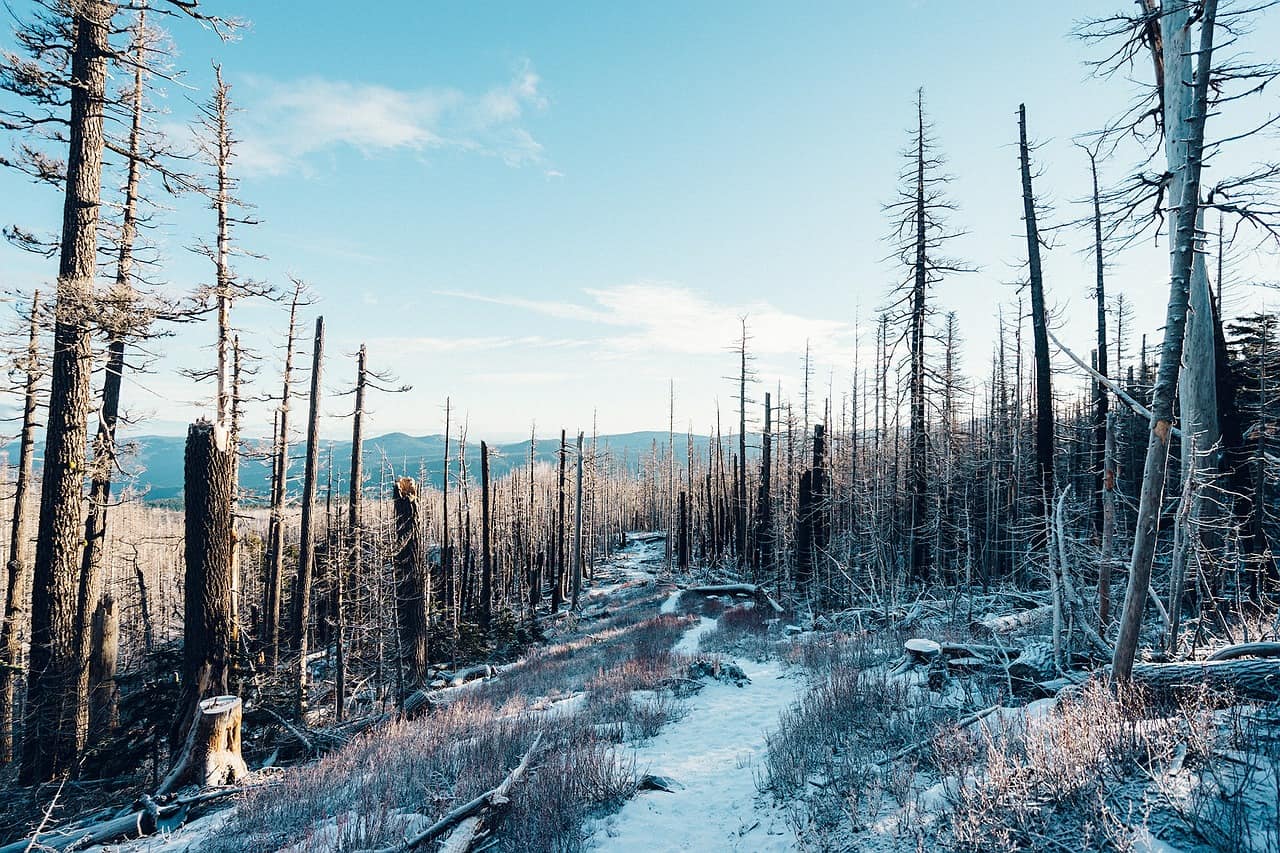
Wildlife and Other Hazards
When camping outdoors, you may encounter wildlife such as bears, snakes, or insects that can risk your safety. Taking precautions is essential to minimize the risk of encountering wildlife and other hazards.
Here are some tips for staying safe from wildlife and other hazards:
- Store food and other scented items in bear-resistant canisters or hang them from a tree away from your tent
- Carry bear spray and know how to use it in case of a bear encounter
- Check your tent and gear for spiders, scorpions, and other dangerous insects before settling in for the night
Proper Care and Use of Trekking Poles
Ultralight trekking pole tents require trekking poles to be set up correctly. It is essential to take care of your trekking poles and use them properly to avoid injury and ensure their longevity.
Here are some tips for using and caring for your trekking poles:
- Adjust your trekking poles to the appropriate height for your body to avoid strain and injury
- Ensure that the tips of your trekking poles are secure and free from damage
- Store your trekking poles properly when not in use to avoid damage or bending
In summary, ultralight trekking pole tents are an excellent option for those looking to save weight and pack space, but keeping safety in mind is important. Proper use of guy lines and stakes, avoiding dangerous tent placement, minimizing
Conclusion
Ultralight trekking pole tents are popular for those who want to reduce weight and bulk in their pack while still enjoying the comfort of a shelter. By using trekking poles as the main support structure, these tents are often lighter and more compact than traditional freestanding tents.
However, they also require more setup time and attention to proper pitching to ensure stability and safety.
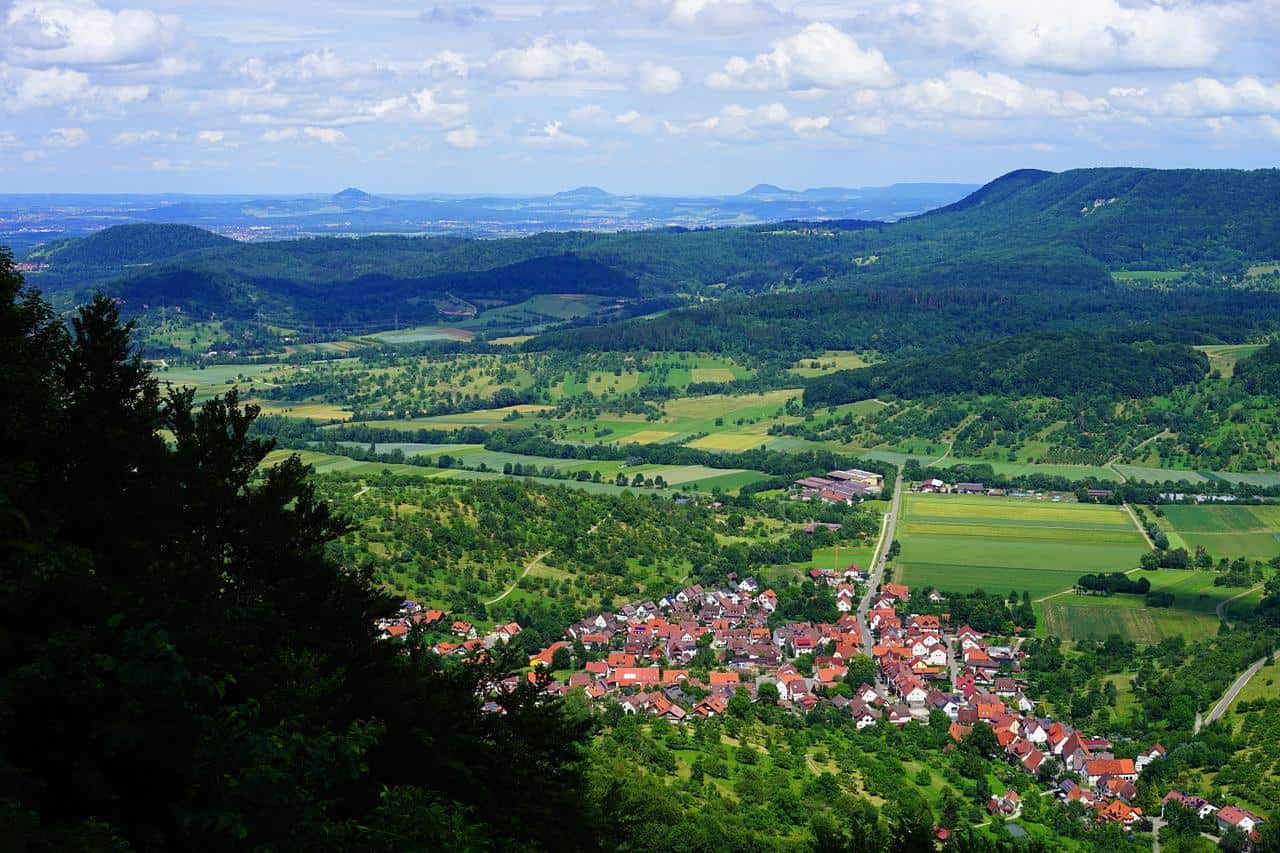
Recap of benefits and considerations of ultralight trekking pole tents
When considering an ultralight trekking pole tent, it’s essential to weigh the benefits and considerations:
Benefits:
- Lightweight and compact
- More affordable
- Versatile and can be set up in a variety of locations
Considerations:
- Requires trekking poles or alternative support structure
- Less stable in windy or stormy conditions
- Setup can be more time-consuming and require more skill.
Choose the Perfect Ultralight Trekking Pole Tent for Your Next Adventure
Choosing the right ultralight trekking pole tent for your backpacking needs is essential to a successful and enjoyable trip. Take the time to consider the capacity, weight, durability, seasonality, livability, and price of the tent before making a purchase. Research different types of tents, and practice setting up and breaking down the tent before hitting the trail.
Concluding Thoughts and Suggestions
Remember that safety is always the top priority when using any camping gear. Follow the manufacturer’s instructions for setup and maintenance, and always check the weather and terrain conditions before choosing a campsite.
With proper planning, care, and attention to safety considerations, an ultralight trekking pole tent can be an excellent choice for backpackers who want to minimize their load and maximize their outdoor experience.
aeorienteering.com is reader-supported. When you buy through links on our site, we may earn an affiliate commission.
